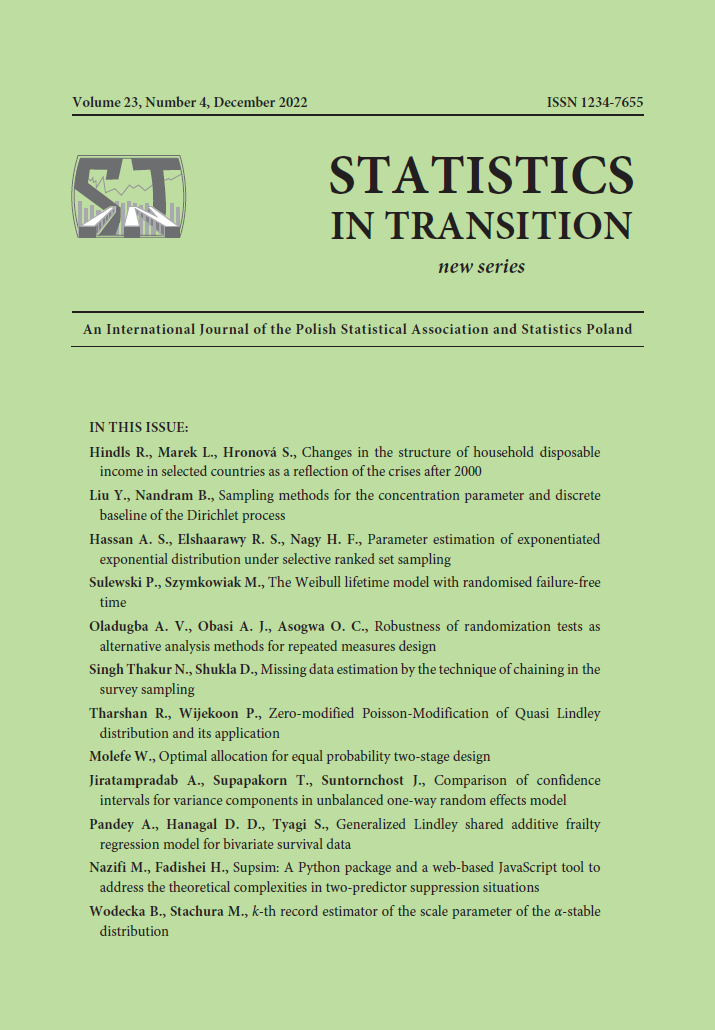ARTICLE
ABSTRACT
Wages and salaries represent the most important component of household disposable income. The aim of the article is to examine how the relationship between the shares of households’ wages and final consumption expenditure in their gross disposable income has developed over the past 20 years. The presented analysis uses publicly available national accounts data for 30 countries for the period of 2000–2019. The studied indicators include the proportion of households’ wages and salaries, and final consumption expenditure in their gross disposable income. Using the proposed method based on the evaluation of changes in the spatial map, it is possible to observe any significant changes in these proportion values in the years of financial crisis and recession, as well as in the years of prosperity. The procedure can therefore serve as an indicator of appreciable changes in economic development.
KEYWORDS
gross domestic product, final consumption expenditure, disposable income, mutual change of two relative indicators in space and time, indicators of income and expenditure in households
REFERENCES
Alp, E., Seven, U., (2019). The dynamics of household final consumption: the role of wealth channel. Central Bank Review, 19(1), pp. 21–32.
Attanasio, O., Davis, S. J., (1996). Relative Wage Movements and the Distribution of Consumption. Journal of Political Economy, 104(6).
Apergis, N., Simo-Kengne, B., Gupta, R., (2014). The long-run relationship between consumption, house prices and stock prices in South Africa: evidence from province-level data. J. Real Estate Lit., 22, pp. 83–99.
Campelo, A., Bittencourt, V. S., Malgarini, M., (2020). Consumers Confidence and Households Consumption in Brazil: Evidence from the FGV Survey. J Bus Cycle Res, 16, pp. 19–34.
Duesenberry, J. S., (1949). Income, saving, and the theory of consumer behavior, Cambridge, MA: Harvard University Press.
European System of Accounts – ESA 1995, (1996). Luxembourg, Eurostat.
European System of Accounts – ESA 2010, (2013). Luxembourg, Eurostat.
Friedman, M., (1957). A Theory of the Consumption Function. Princeton, NJ: Princeton University Press.
Hall, R., (1978). Stochastic Implications of the Life Cycle-Permanent Income Hypothesis: Theory and Evidence. Journal of Political Economy, 86(6), pp. 971–988.
Hamburg, B., Hoffmann, M., Keller, J., (2008). Consumption, wealth and business cycles in Germany. Empir. Econ., 34(3), pp. 451–476.
Heckman, J., (1974). Life Cycle Consumption and Labor Supply: An Explanation of the Relationship between Income and Consumption Over the Life Cycle. The American Economic Review, 64(1), pp. 188–194.
Hindls, R., Hronova, S., (2012). Reflection of economic development of selected countries in the structure of final consumption expenditure. Political Economy, 60(4), pp. 425–441.
Jappelli, T., Pistaferri, L., (2010). The Consumption Response to Income Changes. Annu. Rev. Econ., 2, pp. 479–506.
Keynes, J. M., (1936). The General Theory of Employment, Interest and Money. Macmillan, London.
Kovacs, A., Rondinelli, C., Trucchi, S., (2019). Permanent versus Transitory Income Shocks over the Business Cycle. IFS Working Paper WP19/29
Lusardi, A., (1996). Permanent Income, Current Income, and Consumption: Evidence From Two Panel Data Sets. Journal of Business & Economic Statistics, 14 (1), pp. 81– 90.
Modigliani, F., Brumberg, R., (1954). Utility analysis and the consumption function: An interpretation of cross-section data. In Kurihara, K. K. Post-Keynesian Economics.
Sanders, S., (2010). A Model of the Relative Income Hypothesis. The Journal of Economic Education, 41(3), pp. 292–305.
System of National Accounts 1993 (SNA 1993), (1993). New York, United Nations, IMF, OECD. Eurostat, World Bank.
System of National Accounts 2008 (SNA 2008), (2013). New York, United Nations, IMF, OECD. Eurostat, World Bank.
Thurow, L., (1969). The Optimum Lifetime Distribution of Consumption Expenditure. The American Economic Review, 59, pp. 324–330.
